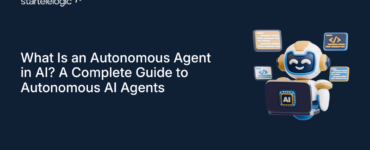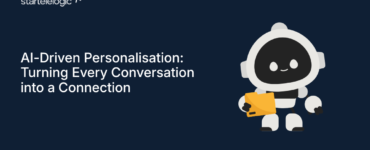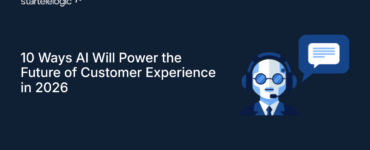As artificial intelligence gets better, agentic AI frameworks are becoming a big change in technology. These frameworks allow smart agents to do complicated jobs, make decisions, and adjust easily to real-life situations. In this article, we will look at the top agentic AI frameworks of 2025 that are ready to change industries like healthcare, finance, logistics, and more. We will also discuss how these leading AI frameworks for smart agents are affecting the future of intelligent systems.
Why Agentic AI Frameworks Matter
Agentic AI frameworks are designed to create independent programs that can interact with their environment, learn from it, and achieve specific goals. A report by Grand View Research shows that the global AI market is expected to grow by 37.3% annually from 2023 to 2030, with autonomous systems being key to this growth.
These frameworks are important for businesses wanting to automate tasks, work more efficiently, and offer customized experiences. For example, in manufacturing, autonomous agents can make production lines more efficient, and in healthcare, they can help doctors with diagnoses. As we get closer to 2025, here are some top agentic AI frameworks to watch.
1. LangChain: The Ultimate Tool for Natural Language Agents
With its modular design, LangChain allows developers to integrate various components seamlessly, making it flexible and adaptable to a wide range of use cases. The framework supports the creation of complex workflows by chaining together different models and data sources, enabling more sophisticated and context-aware interactions.
Moreover, LangChain’s strong community and comprehensive documentation provide developers with the resources they need to innovate and troubleshoot effectively. As AI continues to evolve, frameworks like LangChain play a crucial role in bridging the gap between cutting-edge technology and practical applications, empowering developers to create more intuitive and responsive AI systems. Whether building chatbots, virtual assistants, or any other interactive AI solution, LangChain offers the tools and flexibility to bring these projects to life.
Key Features:
- Modular architecture for seamless integration.
- Pre-trained models for rapid deployment.
- Advanced reasoning capabilities for decision-making.
Why It’s a Game-Changer:
LangChain’s capacity to connect with large language models (LLMs) makes it a perfect choice for developing conversational agents, chatbots, and virtual assistants. According to a study by Statista, 80% of businesses are expected to adopt AI-driven chatbots by 2025. For those investigating the top agentic AI frameworks for 2025, LangChain is definitely one to keep an eye on.
Example:
Imagine a customer support system powered by LangChain. Instead of relying on scripted responses, the AI agent can analyze customer queries in real-time, provide accurate answers, and even escalate issues to human operators when necessary. This level of sophistication is what sets LangChain apart.
2. AutoGPT: Self-Driving AI Agents
AutoGPT uses advanced language understanding to follow complex instructions and make decisions on its own. This makes it useful for tasks from basic data analysis to solving more complex problems, benefiting many industries.
It improves by learning from each interaction and refining its strategies. This is enhanced by rewarding successful actions and changing tactics when needed.
AutoGPT’s potential goes beyond traditional uses, driving innovation in areas like healthcare, finance, and customer service, where quick and adaptable decision-making is important. As technology advances, AutoGPT will likely become even more advanced, changing how we work and interact with technology.
Key Features:
- Self-prompting mechanism for continuous task execution.
- Integration with APIs for real-time data access.
- Scalability for enterprise-level applications.
Industry Impact:
AutoGPT is particularly popular in sectors like e-commerce and customer service, where autonomous agents handle repetitive tasks such as order processing and query resolution. By 2025, the automation software market is expected to reach $626 billion , according to MarketsandMarkets . This positions AutoGPT as one of the top AI frameworks for autonomous agents driving automation trends.
3. BabyAGI: Task-Oriented Autonomous Agents
With its modular design, BabyAGI enables seamless integration with various applications, making it an ideal choice for industries ranging from healthcare to finance. The agents can prioritize tasks, adapt to changing environments, and learn from experience, ensuring efficiency and effectiveness in their operations. As BabyAGI continues to evolve, it promises to revolutionize the way we harness AI technology, driving innovation and creating opportunities for a smarter and more connected future.
Key Features:
- Prioritization algorithms for efficient task management.
- Memory retention for long-term learning.
- Open-source community support.
Use Case:
BabyAGI is widely used in project management tools, helping teams automate workflows and optimize resource allocation. With remote work adoption rising by 400% since 2020 , frameworks like BabyAGI are becoming indispensable for modern workplaces. It’s no wonder BabyAGI ranks among the best agentic AI frameworks 2025 .
4. CrewAI: Collaborative Intelligence
With its innovative approach, CrewAI empowers individual agents to communicate effectively, share information, and make collective decisions that enhance efficiency and outcomes. By simulating human-like collaboration, these agents can adapt to dynamic environments and tackle challenges that are too intricate for a single AI to handle alone. This opens up new possibilities for industries across the board, from healthcare to logistics, where the synergy of combined AI efforts can lead to breakthroughs and optimized solutions. As technology continues to evolve, CrewAI stands at the forefront, demonstrating the potential of collaborative intelligence in shaping a smarter, more connected future.
Key Features:
- Multi-agent communication protocols.
- Dynamic role assignment based on agent capabilities.
- Real-time performance monitoring.
Statistics:
Collaborative AI systems are predicted to increase operational efficiency by up to 40% across industries by 2025, according to McKinsey & Company . CrewAI stands out as one of the top AI frameworks for autonomous agents leading this trend.
Example:
In disaster response, CrewAI can coordinate multiple agents to assess damage, allocate resources, and communicate with emergency services. Each agent specializes in a specific task, ensuring a streamlined and effective response. This collaborative approach is revolutionizing how organizations tackle large-scale challenges.
5. Semantic Kernel: Bridging Knowledge Gaps
Semantic Kernel uses advanced language technology to help users work with large amounts of data more easily and effectively. It boosts productivity and makes powerful AI tools available to more people, even those without technical skills.
With its easy-to-use interface and strong performance, Semantic Kernel is popular among professionals in different fields. It works well with existing systems and lets users customize AI models to suit their specific needs, providing useful and relevant insights.
As AI technology grows, Semantic Kernel stays updated with the latest improvements, offering precise and context-aware results that are valuable in today’s workplace.
Key Features:
- Hybrid architecture combining symbolic and neural approaches.
- Plug-and-play modules for easy customization.
- Strong emphasis on ethical AI practices.
Market Insight:
The demand for AI-powered knowledge management tools is skyrocketing, with the global market expected to hit $1.6 trillion by 2025 , per Allied Market Research . Semantic Kernel addresses this need effectively, making it a standout choice among top AI frameworks for autonomous agents .
Practical Application:
Semantic Kernel can be used in legal firms to analyze case laws, identify precedents, and draft documents. Its hybrid architecture ensures both accuracy and flexibility, making it an invaluable tool for professionals who rely on precise information.
Emerging Trends Influencing Agentic AI
Though the aforementioned frameworks are at the forefront, several overarching trends are shaping the evolution of agentic AI:
1. Explainable AI (XAI): With autonomous agents assuming more significant responsibilities, there’s an increasing demand for transparency. Explainable AI allows humans to comprehend and audit the decisions made by these agents.
2. Edge Computing: The surge of IoT devices is making edge computing essential, enabling AI agents to process data locally, which decreases latency and enhances real-time decision-making.
3. Ethical Considerations: Developers are placing greater emphasis on incorporating ethical safeguards into agentic AI frameworks to prevent misuse and promote fairness.
Conclusion: The Future of Agentic AI Frameworks
In 2025, leading AI frameworks go beyond task automation; they help autonomous agents think, learn, and act intelligently. LangChain excels in language understanding, while CrewAI shines in teamwork. These frameworks lay the foundation for more intelligent and flexible systems. As businesses adopt these top AI frameworks for autonomous agents, staying ahead is key to success.
With the use of these advanced technologies, organizations can become more efficient, innovative, and better at satisfying customers. These frameworks should be watched as they continue to shape the future of artificial intelligence.




